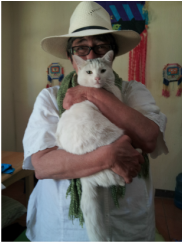thirty minutes. I kept expecting to see the temples and pyramids --Temple IV is the tallest structure in the Mayan world and is only one of the massive structures on this well excavated site. But there was only thick jungle vegetation, as far as I could see. Later I learned that Tikal encompasses 222 square miles and is important not only for its magnificent ruins but also for the protection of a vast array of wildlife and fauna.
We met up with our guide, Luis, at the coffee shop and still there was no evidence of pyramids or temples. Luis’s English was excellent, which is unusual. Most guides, like most Guatemalans, speak little, if any, English. Though I am relatively competent at understanding Spanish, it was relaxing not to work at understanding what was being said. Our first instruction was to slather ourselves in insect repellent as we would be walking through the
jungle on our way to the Temples.
Smelling strongly of deet, the group stopped to examine a model of Tikal, where the vast extent of the excavations were apparent. Tikal was first settled between 900 and 700 BC with the first pre-classic temple constructed around 500 BC. By the
early classic period, around 250AD, Tikal was an important commercial, religious and cultural center with major construction occurring over a period of 500 years, coinciding with the reign of each new ruler. At it’s height Tikal was home to at least 100,000 people. One theory for the abandonment of the Mayan cities is evidence of extensive deforestation, which suggests a lack of both fuel and food. Luis explained that the jungle had grown up around Tikal only after it was abandoned in the late 10th Century, CE.
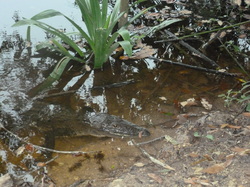
limestone the Mayans used to construct their buildings were first quarried and
then carried on their backs up to the site of the pyramids and temples, using
roads which are still evident today. Luis said anthropology suggests that at first the workers considered this work an honor, but with the passing of time came increasing evidence of enslavement. At the shore of the swamp Luis enticed a crocodile by holding a plastic wrapped sandwich to the ground. The crocodile swam obligingly closer, eyes bright at the water’s edge. Louis put his sandwich back into his pack. It’s not surprising that the crocodile is represented in the Mayan glyphs as the stoneworkers undoubtedly encountered them while
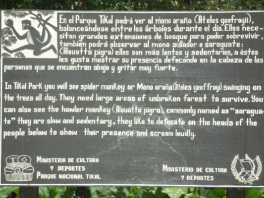
their arms and tails through the trees. During the day they are usually in motion and can cover a lot of territory, rarely descending from the upper stories of the trees. Eagles and the boa constrictors which also live far up in the trees (happily for me) are their two main predators of the spider
monkeys.
The larger howler monkeys are also in evidence at Tikal though
they are much easier to hear than to see.
At first they can be quite intimidating as their howl actually sounds like the roaring of a ferocious beast. In fact they are more
sedentary then the spider monkeys and again, rarely descend to the ground A sign at the park warned that if you
walked beneath the howler monkeys they would defecate on your head! My only glimpse of these roaring monkeys was from a distance so I did not have that experience.
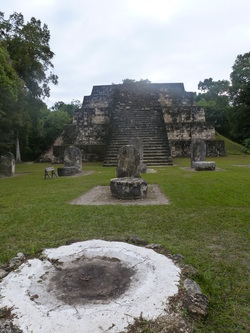
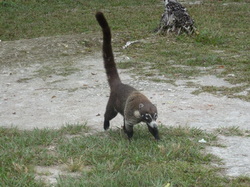
.
As if reading my mind, Luis said, emphatically, “We say you haven’t been to Tikal if you have not climbed Temple IV.”
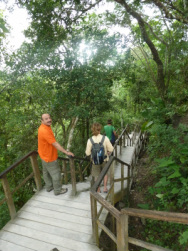
And so I was at the top sooner and more comfortably than I could have imagined, looking out far across the jungle, where the tops of temples 1, II and III pierced the greenery.
Below us three groups of howler monkeys, their black bodies barely visible, roared ferociously in stereophonic sound. Above us on the temple were the faint outlines of glyphs which are said to chart Tikal’s history and even early Mayan history as far back
as 1139 BC. Despite the lack of any protective barrier at this astonishing height, I felt only wonder and gratitude at beholding this astonishing vista.
asking if anyone else would like to hold it. Still full of bravado from my ascent of Temple IV, I offered my hands and was surprised at my affection for this large furry spider who who was nearly as plush as a child’s stuffed animal.
Luis returned to a discussion of the geometry of Tikal, pointing out that 52 buildings were placed in precise geometric relationship to each other, representing the Mayan calendar round of the Tzolkin and the Haab. Each temple or pyramid was constructed as new rulers ascended, during a period of over 1200 years wherin each massive
structure was precisely situated. “It is as if there was a master plan which took over 1200 years to complete,” Luis said.
“Some people credit the Olmecs, others believe such a plan would have to be formulated from above the site, from beings who could see the geometry of this site from the sky above it.”
We continued strolling through the jungle, past a giant ant mound and flocks of loros and parrots above us. At one point Luis pointed out the glyps on the side of the temple complex. He showed me how to put my face in an ancient glyph as a personal ceremony of empowerment. At last we came to the great central plaza with the Temple of the Grand Jaguar and the Temple of the Masks facing each other. These are the most often photographed sites of Tikal and also continue to be used for Mayanceremonies. At this point Luis left us to climb the many steps of the nearby buildings and to wander through the adjacent living quarters of the Mayan elite. I perched myself in atop an ancient apartment and ate my lunch, imagining the colors of the quetzal shining brightly from the stone around me.
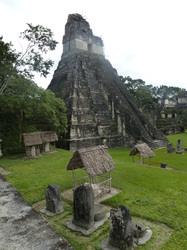
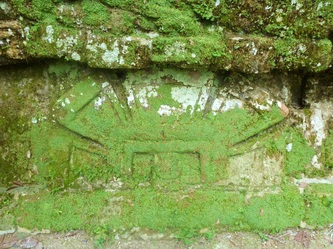
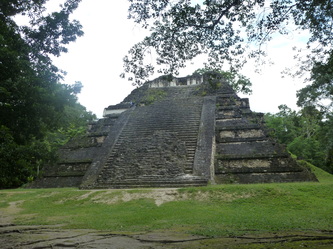
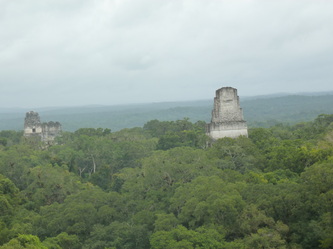
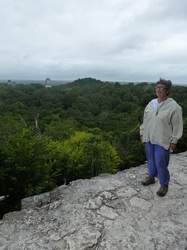
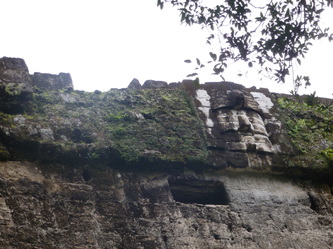
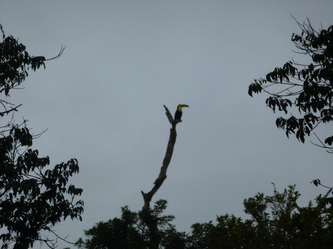
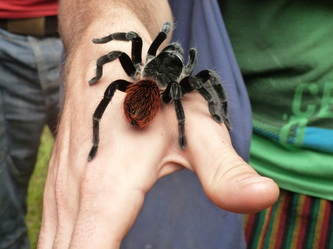
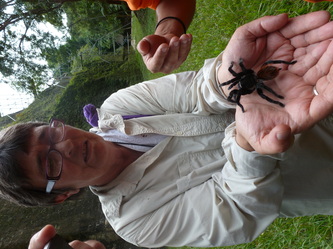
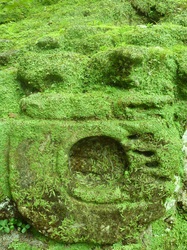
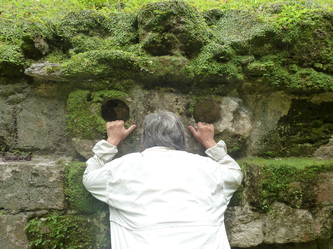
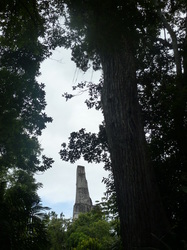
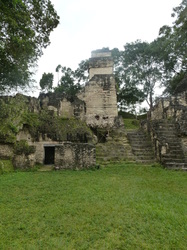
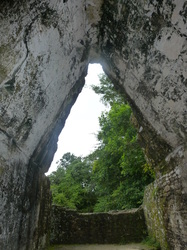
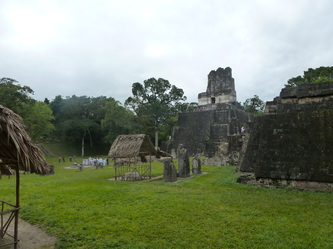
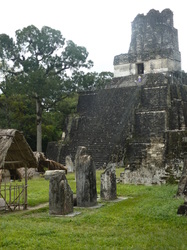
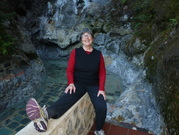
 RSS Feed
RSS Feed
